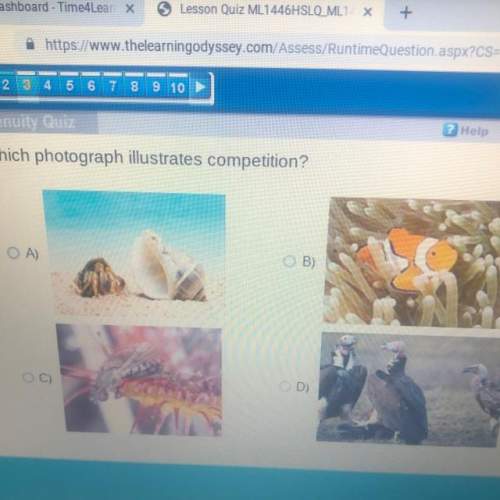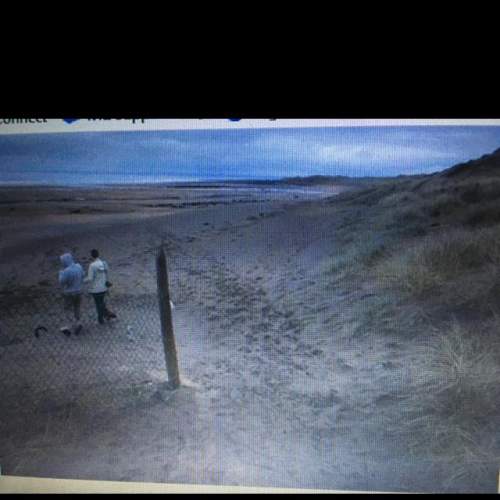Which photograph illustrates competition?
a)
b)
c)
d)
...

Answers: 2


Another question on Biology

Biology, 20.06.2019 18:04
The instructions for the genetic traits of an organism are directly determined by the a-numbers of a,t,c and g units in a sugar molecule b-sequence of the bases in dna molecules c-length of a dna molecules d-way the bases are paired in the two strands of a dna molecule
Answers: 3

Biology, 21.06.2019 15:30
1. label high-pressure areas with the letter h. 2. label low-pressure areas with the letter l. 3. over which area(s) would you expect to see rain or snow? 4. over which area(s) would you expect to see clear skies? 5. draw arrows around the h on the map to show the wind direction. 6. draw arrows around the l on the map to show the wind direction. 7. imagine that you live in maine. currently there is a high-pressure area over maine. if a low-pressure area moves in, how will the direction of the wind change? 5. draw arrows around the h on the map to show the wind direction. 6. draw arrows around the l on the map to show the wind direction. 7. imagine that you live in maine. currently there is a high-pressure area over maine. if a low-pressure area moves in, how will the direction of the wind change? 8. imagine that you live in colorado. currently there is a low-pressure area over colorado. if a high-pressure area moves in, how will the direction of the wind change? 9. according to the map, where would the strongest winds be expected? (refer to the lesson if needed.)
Answers: 2

Biology, 21.06.2019 20:00
Which type of bacterial reproduction is depicted in the diagram?
Answers: 2

Biology, 22.06.2019 01:30
Scenario 5 1) take 10 red and 10 black beans and place them, mixed, on the table. record the starting phenotype # and frequencies (% of your total population) of your starting population in the table provided (generation 0). 2) act as a predator. “capture” as many organisms as you can until you have reduced the population to three organisms. put them aside. at this point, the predators die. 3) the remaining organisms each produce 2 clonal offspring. multiply your organisms accordingly and allow them to mix on the table. calculate and record the resultant phenotype # and frequencies (% of your total population) of your population in the table provided (generation 1). 4) repeat the reproduction event, allowing each of your organisms to produce 2 clonal offspring. calculate and record the resultant phenotype # and frequencies (% of your total population) of your population in the table provided (generation 2). 5) repeat the reproduction event, allowing each of your organisms to produce 2 clonal offspring. calculate and record the resultant phenotype # and frequencies (% of your total population) of your population in the table provided (generation 3).
Answers: 1
You know the right answer?
Questions

Mathematics, 23.08.2021 01:10


Physics, 23.08.2021 01:10


Mathematics, 23.08.2021 01:10


Chemistry, 23.08.2021 01:10

History, 23.08.2021 01:10

Mathematics, 23.08.2021 01:10


Mathematics, 23.08.2021 01:10


Mathematics, 23.08.2021 01:10

Mathematics, 23.08.2021 01:10



Mathematics, 23.08.2021 01:10


Mathematics, 23.08.2021 01:10

Mathematics, 23.08.2021 01:10





